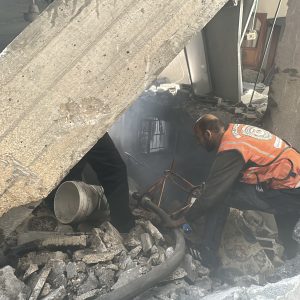Inaugural Art Week Riyadh set to redefine regional art ecosystem
Art events in Saudi Arabia are testament to Kingdom’s growing push for cultural diversification
RIYADH, Saudi Arabia (MNTV) – The Saudi capital will launch its first Art Week Riyadh (AWR) on April 6, a non-commercial initiative designed to amplify Riyadh’s burgeoning art scene while fostering global artistic exchange.
Under princess Adwaa bint Yazeed bin Abdullah, AWR seeks to position Riyadh as a dynamic cultural hub that bridges heritage and innovation.
“Art Week Riyadh is born from a belief in the power of art to inspire, challenge, and connect us,” princess Adwaa stated.
“Through this platform, we aim to contribute to Riyadh’s cultural future—one that is open, dynamic, and deeply rooted in both tradition and contemporary creativity”, she said.
Led by Vittoria Matarrese, the curatorial team—including associate curators Basma Harasani and Victoria Gandit-Lelandais, alongside public program curator Shumon Basar—has crafted an event that defies traditional art fair structures.
“We wanted to avoid rigid formats and instead create a constellation of events,” Matarrese told Arab News.
“Unlike major art fairs that impose universal themes, we’ve embraced the textures and sensibilities of the Arabian Peninsula, offering a critical departure from the norm.”
The inaugural edition, themed “At the Edge,” explores three sub-themes: “Everyday Life,” “Landscapes,” and “Motifs.”
More than 45 galleries from Saudi Arabia, the wider Arab world, and beyond will participate, presenting a diverse range of artistic narratives.
Key venues include:
– JAX District (Diriyah): Three major exhibitions examining Saudi cultural identity, alongside open studios of prominent local artists.
– Al-Mousa Center (Central Riyadh): Over 15 gallery exhibitions.
– Citywide Programming: Talks, collaborations, and public engagements.
Gandit-Lelandais, a specialist in contemporary Arab art, emphasized the event’s tailored approach.
“Art Week Riyadh isn’t about replicating European or American models—it’s about adapting formats to fit the region’s unique ecosystem,” she said.
For Basma Harasani, the sole Saudi curator on the team, AWR represents a pivotal moment for local artists.
“This is an opportunity for Saudi artists to narrate their own stories beyond traditional frameworks,” she noted.
“The educational aspect is crucial—for artists, collectors, and enthusiasts alike,” Harasani added.
Though none of the curators reside in Riyadh, their deep engagement with the city’s evolving art scene has informed AWR’s programming.
“Riyadh’s cultural landscape is distinct, even from other Saudi cities like Jeddah,” Harasani observed.
Matarrese highlighted the Kingdom’s strategic approach to cultural development. “Saudi Arabia has learned from global precedents and is navigating its own path,” she said.
“AWR is designed to surprise—to deconstruct conventional displays and rearticulate dialogues within the art world.”
For Harasani, the event symbolizes a generational shift.
“Projects like this were unimaginable when I was growing up. To see them materialize now is both a privilege and a testament to Saudi Arabia’s artistic progress,” she stated.
As Art Week Riyadh prepares to open, it stands as a bold new platform—one that challenges expectations, celebrates regional artistry, and solidifies Riyadh’s place on the global cultural map.










